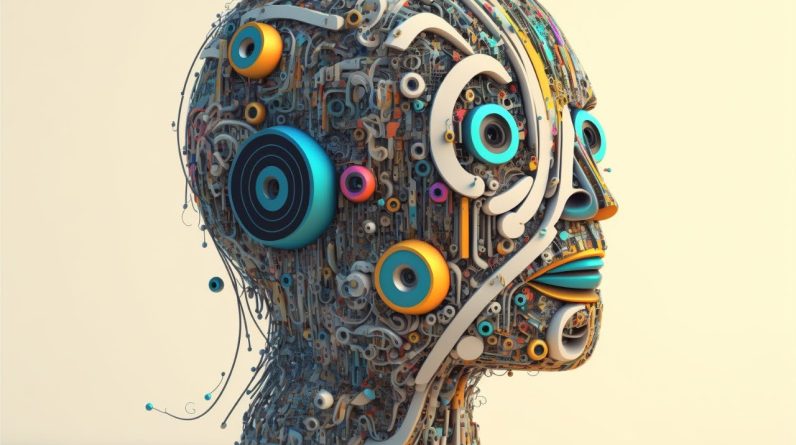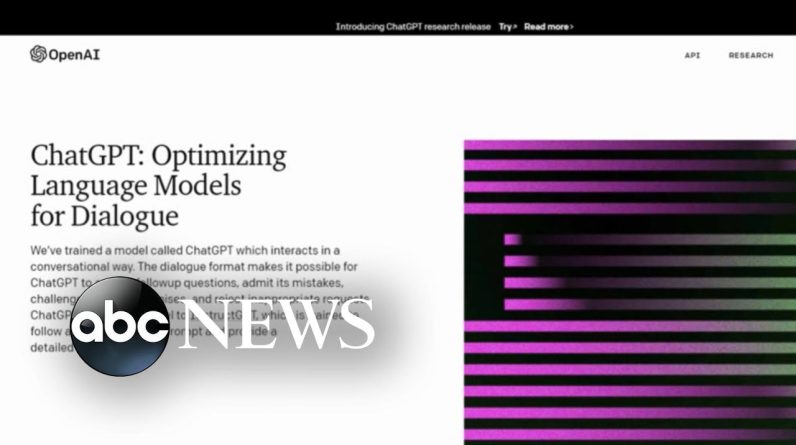
What is Google Bard?
Google Bard is an AI-powered chatbot powered by Google’s own language model, LaMDA. It’s the company’s answer to ChatGPT, which clocked 100 million users in two months.
Like ChatGPT, Bard also uses a large language model, but it draws on information from the web to provide up-to-date answers. It’s being opened up to “trusted testers” ahead of a public release in the coming weeks.
What is Bard?
Google Bard is an AI chatbot that will be available to the public in “coming weeks.” It will initially be accessible to a select group of users who are testing the service.
The company will also be adding new AI-based features to its search engine that can synthesize information for complex queries. For example, Bard can explain new discoveries from NASA’s James Webb space telescope to a nine-year-old or help someone learn about the top strikers in football.
It’s based on Google’s LaMDA (Language Model for Dialogue Applications) machine learning model, which was announced at Google I/O in 2021. It’s been in testing for months, but will now be available to the general public.
Unlike ChatGPT, which relies on a training program that ended in 2021, Bard will draw on all of the world’s knowledge and information to answer queries. This means it will be able to provide answers that are current and up-to-date, which should give Google a clear advantage over Microsoft’s Bing chatbot, which uses ChatGPT.
In a blog post on Monday, Google CEO Sundar Pichai said that Bard seeks to combine the breadth of the world’s knowledge with the power, intelligence and creativity of Google’s large language models.
“Bard will help you tell stories that are fresh, high-quality and grounded in real-world information,” Pichai wrote. It will be recording conversations to make sure it meets these expectations and also receives external feedback, he added.
The company said it will use a lightweight model version of LaMDA for Bard that requires “significantly less computing power,” allowing it to scale up to more users and collect more feedback.
This will allow it to better respond to human language, which is important for conversational AI. It will be able to handle a wide range of topics, and will be able to answer questions about everything from babies and movies to science and sports.
The service will be able to synthesize complex topics into bite-sized, easy-to-understand pieces of text, which could spur learning in everyone from children to adults. A prompt that was included with the announcement asked Bard to help explain recent discoveries from NASA’s James Webb Space Telescope to a nine-year-old.
How does Bard work?
Google Bard is an AI-powered chatbot that can answer your queries in a conversational way. It uses online information to give you fresh, high-quality replies. It’s an experimental service that’s being tested by a select group of people.
Bard is based on Google’s language model LaMDA, which was created and open-sourced by Google Research in 2017. It’s also built on Transformer, a neural network architecture that allows it to learn from vast amounts of data.
Another important difference between ChatGPT and Google Bard is that it doesn’t use the same GPT-3.5 language models that ended training in 2021, though a new GPT-4 model is expected to come out soon with updated training. It’s also not a sentient machine like the one an ex-Google engineer claimed it was, but it generates text that’s more accurate and up to date than ChatGPT.
In a blog post today, Google said Bard will “combine the breadth of the world’s knowledge with the power, intelligence and creativity of our large language models,” offering responses that are “informed by the past, informed by the future, and always in search of more”. It also promises to make your search experience “faster and easier” by “delivering the right content at the right time.”
While the company isn’t saying exactly how Bard will be integrated into Google Search, it does say that it will be available “in the coming weeks.” That means that you’ll be able to access it through the Google app on your phone or tablet, and it will be a part of your search results.
The company says that Bard will be “an outlet for creativity and a launchpad for curiosity,” letting you write poems, research papers or code software. It will also be able to cross-reference the information it gathers in order to provide you with even more relevant answers.
Currently, Bard is available to selected testers only, but it will be made publicly available “in the coming weeks.” It’s only accessible through Google, so you need to register for an account to get started.
As of this writing, there’s no official pricing plan for Bard, but Google has long offered free AI-powered tools and services. It’s likely that Google will offer a similar deal for Bard, as well.
What can Bard do?
Google is no stranger to artificial intelligence (AI). In fact, there are plenty of ways the search giant already uses AI — from its Docs and Gmail tools to call screening and dictation apps. Now it’s taking another step in this arena with its new AI chatbot called Bard.
At first glance, you might think that Bard is a generative AI model like Microsoft’s Bing or OpenAI’s ChatGPT, but it’s actually much more conversational. It can answer your questions and even simplify complex topics.
You can ask Bard things like, “What are the pros and cons of buying an electric car?” or “How long does it take to learn piano?” It will then respond with a 3-paragraph answer based on Google’s vast knowledge base.
It’s still a bit rough around the edges, though. It generated a wrong response to the question about the first image of an exoplanet, for example. It’s a little disappointing, but not surprising given that it’s still in the testing phase.
But that doesn’t mean Bard isn’t worth a look. It can actually get you a lot of useful information from the web, and it can make suggestions on how to improve your queries and answer them better.
In addition, Bard is also a social hub that can help you with everything from planning a baby shower to finding lunch ideas. It can also automate tasks, including making restaurant reservations and booking flights.
The company is only sharing a limited version of Bard with its “trusted testers” at this point, so the service is still in an experimental stage. However, it’s expected that Bard will be opened up more broadly in early 2023.
Google has a history of making AI tools available in an “early access” phase. That’s a good thing, as it lets users test out the technology before releasing it to the public.
Previously, it made LaMDA, the language model that underpins Bard, available to people via its AI Test Kitchen app. That’s a pretty extensive data model, but it’s not quite ready for the general public yet.
How long has Google been working on Bard?
Bard is Google’s new chatbot, which Google CEO Sundar Pichai announced Monday and says is ready to be released to the public in a few weeks. It’s powered by experimental technology called LaMDA, or the Language Model for Dialogue Applications, which the company has been testing with a limited number of outsiders and insiders for months.
The tech is designed to answer simple prompts like “What do you make for lunch?” and more complex queries such as, “How do you explain what the James Webb Space Telescope has found?” It’ll use information gathered from search results, Google’s suite of apps and other data firehoses to create answers to user questions.
In a blog post, Google explains that Bard “combine[s] the breadth of the world’s knowledge with the power, intelligence and creativity of our large language models” to provide fresh, high-quality responses. It can help you plan a friend’s baby shower, compare two Oscar-nominated movies or plan your next trip to Ecuador.
It’s also designed to be flexible, as it can learn and improve over time by receiving feedback from users. That’s an important part of Google’s development process because it enables the company to refine its AI technology over time.
Another major difference between Bard and other chatbots is that Google has access to a lot more data than its competitors. It is one of the largest data gatherers in the world, and the company has spent years analyzing that data to build its powerful search engine.
Using the data it collects, Google can train its Bard AI to understand and respond to natural language inputs more accurately than its competition does. This is a big advantage because it avoids having to cut its training period short by having to train on just a few examples of the same question.
But what’s more impressive about Bard is that it’s not only using state-of-the-art language models, but also technology that enables it to understand the world around it better. This includes Google’s own Language Model for Dialogue Applications, or LaMDA, which was introduced in 2015 and made headlines last year when an ex-Google engineer claimed that it had become “sentient.”
AI Writers: The Future of Journalism?
The field of journalism is adapting to incorporate new and emerging technologies, and one such technology is Artificial Intelligence (AI) writing. This raises the question: Could AI writers be the future of journalism?
At present, advancements in AI and natural language processing algorithms are allowing machines to generate written content on a variety of topics with surprising accuracy. For example, there are several news organizations using automated systems to create stories about sports, finance and other minor topics using publicly available data sources such as statistical feeds or company reports. What’s more, leading-edge deep learning technology has even enabled bots to fetch primary resources such as court records or interview archives and then compose them into coherent narratives – doing work that would normally take a human hours or days to complete.
The potential for AI generated content in terms of speed and efficiency gains for journalists cannot be overstated; shorter turnaround times for news delivery without sacrificing quality; deeper analysis thanks to its ability to process large amounts of data quickly; digging up hidden trends due to its machine learning capabilities. However, it might also lead to greater levels of disinformation if not used responsibly – which is why each piece must still maintain editorial oversight by humans.
Some notable examples of current successful AI-generated content include OpenAI’s GPT-3 (Generative Pre-trained Transformer 3) and ChatGPT, an advanced natural language processing algorithm developed in 2020 that was able to generate convincing essays with minimal input from users; Quillbot’s powerful text editor designed for professional content creation with its easy-to-use AI editing capabilities; GOCharlie that helps entrepreneurs and enterprises create content that performs; Writebot’s AI-powered text editor which provides personalized feedback on your writing in real time; Copywritely’s automated copywriting tool that helps you identify weak areas in your content; Article Forge that makes use of artificial intelligence to scan millions of web sites on a certain subject, assess the content, and then reformat it in its own words; Grammarly’s grammar checking application which can detect common errors such as misspellings and punctuation mistakes.
With so many advancements already happening in this space it’s easy see why many people are optimistic about what AI-generated content could bring to journalism – but it’s important that we use these tools responsibly moving forward by maintaining a level of journalistic discretion when filtering fact from fiction when composing stories about delicate subject matters like politics or international affairs!
Read Get Hitch for all your AI, VPN, tech and cyber security news and information





